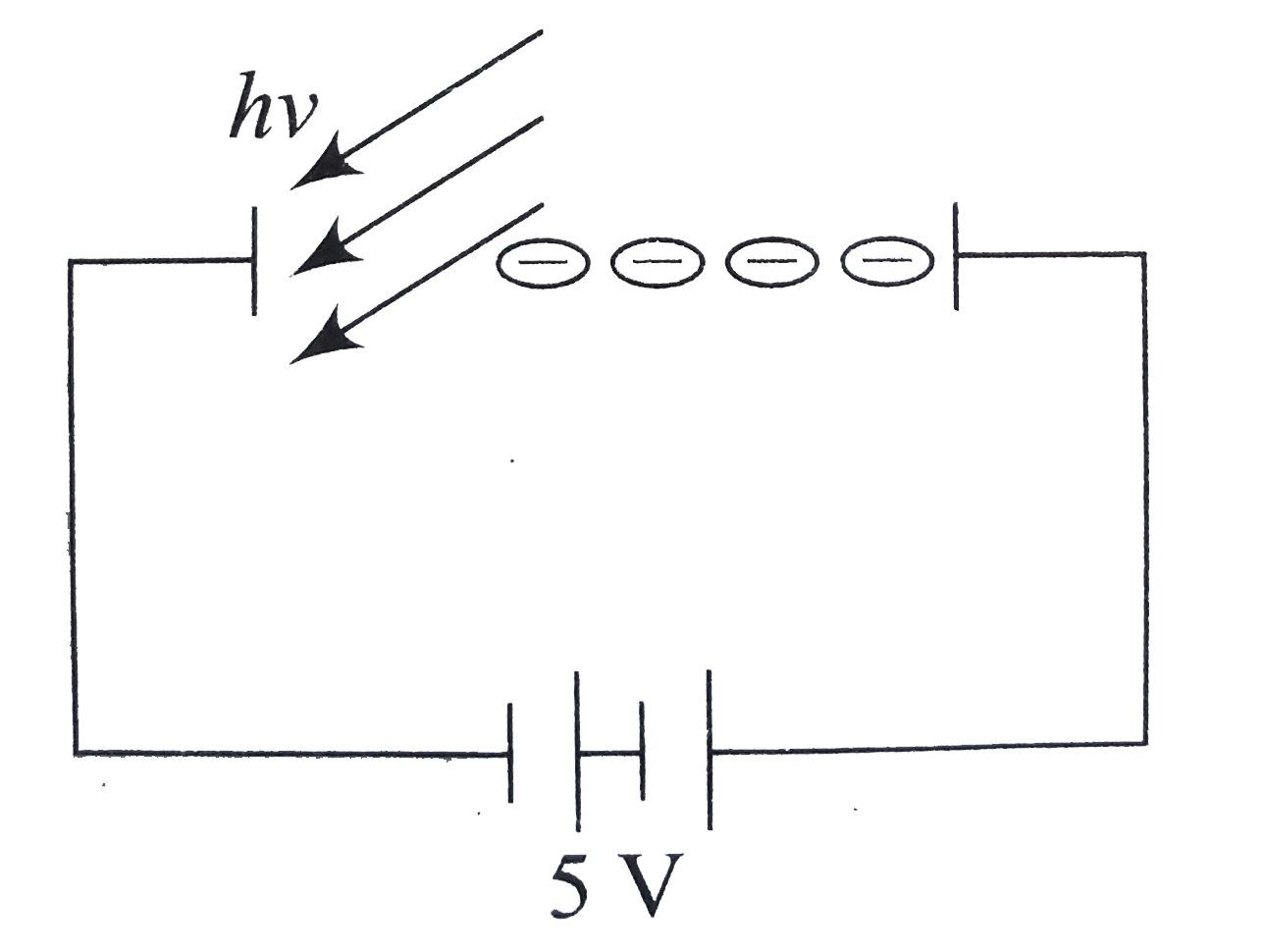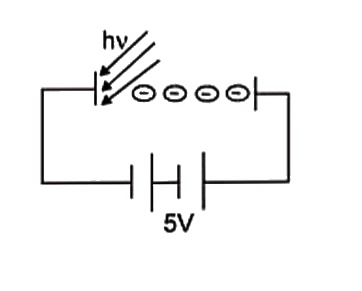
Photons of energy 5eV are incident on the cathode. Electrons reaching the anode have kinetic energies varying from 6eV to 8eV. Find the work function of the metal and state whether the current in the circuit is less than or equal to saturation current.
KEmax=(5−ϕ)eV
When electrons are accelerated through 5V, they will reach the anode with energy =(5−ϕ+5)eV
10−ϕ=8
or ϕ=2eV
Current is less than saturation current. This is because if the slowest electron also reached the plate it would have 5 eV energy at the anode, but it is given that the minimum energy is 6 eV.
Topper's Solved these Questions
- BOOK - CENGAGE PHYSICS ENGLISHCHAPTER - PHOTOELECTRIC EFFECTEXERCISE - Single Correct130videos
PHOTOELECTRIC EFFECT
- BOOK - CENGAGE PHYSICS ENGLISHCHAPTER - PHOTOELECTRIC EFFECTEXERCISE - Multiple Correct10videos
PHOTOELECTRIC EFFECT
- BOOK - CENGAGE PHYSICS ENGLISHCHAPTER - PHOTOELECTRIC EFFECTEXERCISE - Exercise 3.28videos
PHOTOELECTRIC EFFECT
- BOOK - CENGAGE PHYSICS ENGLISHCHAPTER - NUCLEAR PHYSICSEXERCISE - ddp.5.514videos
NUCLEAR PHYSICS
- BOOK - CENGAGE PHYSICS ENGLISHCHAPTER - RAY OPTICSEXERCISE - DPP 1.612videos
RAY OPTICS
Similar Questions
A monochromatic ray of photons of energy 5 eV are incident on cathode. Electrons reaching the anode have kinetic energyies varying from 6 eV to 8eV.Choose the correct option.
 View Solution
View SolutionLight of wavelength 4000A∘ is incident on a metal surface. The maximum kinetic energy of emitted photoelectron is 2 eV. What is the work function of the metal surface?
View SolutionPhotons of energy 6eV are incident on a metal surface whose work function is 4eV. The minimum kinetic energy of the emitted photo - electrons will be
View SolutionWhen the energy of the incident radiation is increased by 20% , kinetic energy of the photoelectrons emitted from a metal surface increased from 0.5eV→0.8eV. The work function of the metal is
View SolutionWhen the energy of the incident radiation is increased by 20% , kinetic energy of the photoelectrons emitted from a metal surface increased from 0.5eV→0.8eV. The work function of the metal is
View SolutionA photon of energy 4eV is incident on a metal surface whose work function is 2eV. The minimum reverse potential to be applied for stopping the emission of electrons is
View SolutionThe energy of the electron in the ground state of hydrogen atom is −13.6eV. Find the kinetic energy of electron in this state.
View SolutionWhen photon of energy 3.8 eV falls on metallic suface of work function 2.8 eV , then the kinetic energy of emitted electrons are
View SolutionOn a photosensitive material, when frequency of incident radiation is increased by 30% kinetic energy of emitted photoelectrons increases from 0.4eV to 0.9eV. The work function of the surface is
View SolutionPhotons with energy 5eV are incident on a cathode C in a photoelectric cell . The maximum energy of emitted photoelectrons is 2eV. When photons of energy 6eV are incident on C , no photoelectrons will reach the anode A , if the stopping potential of A relative to C is
View Solution

